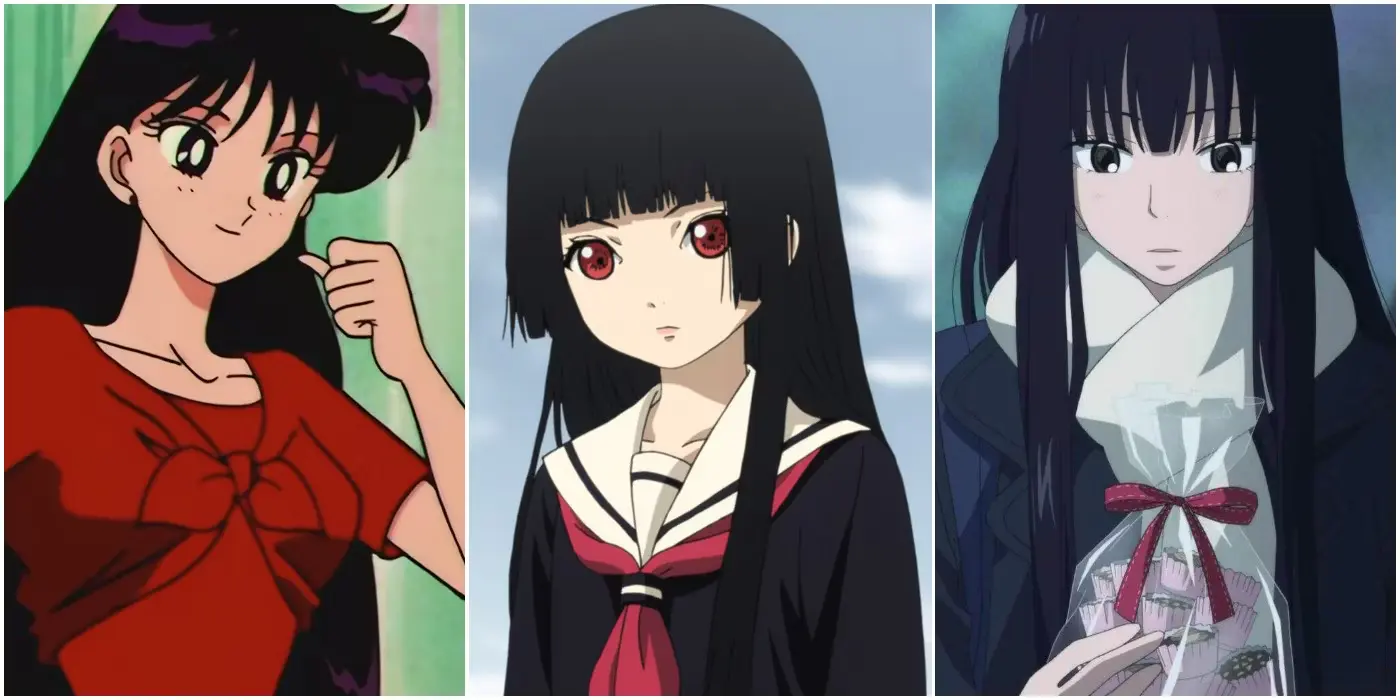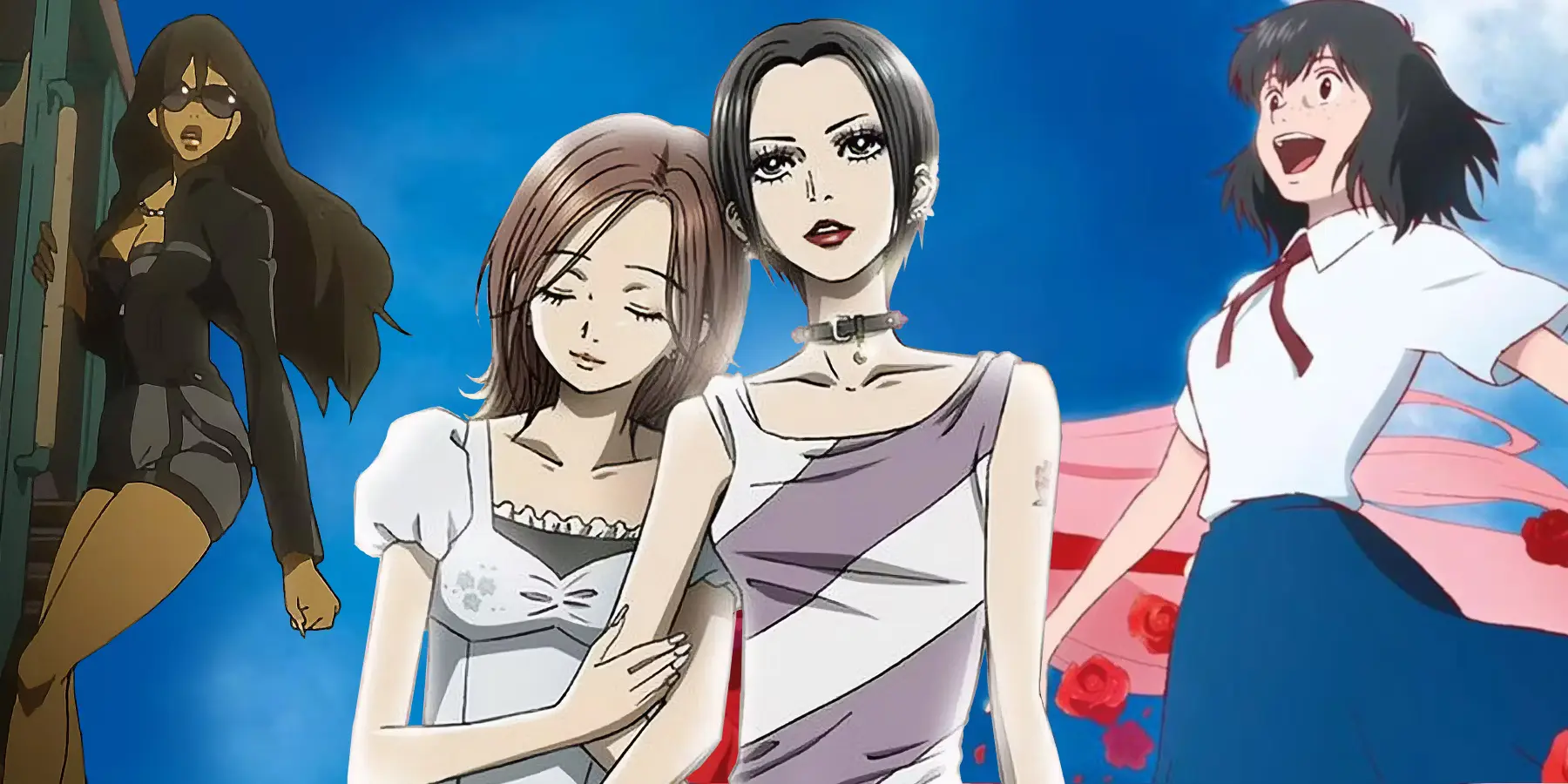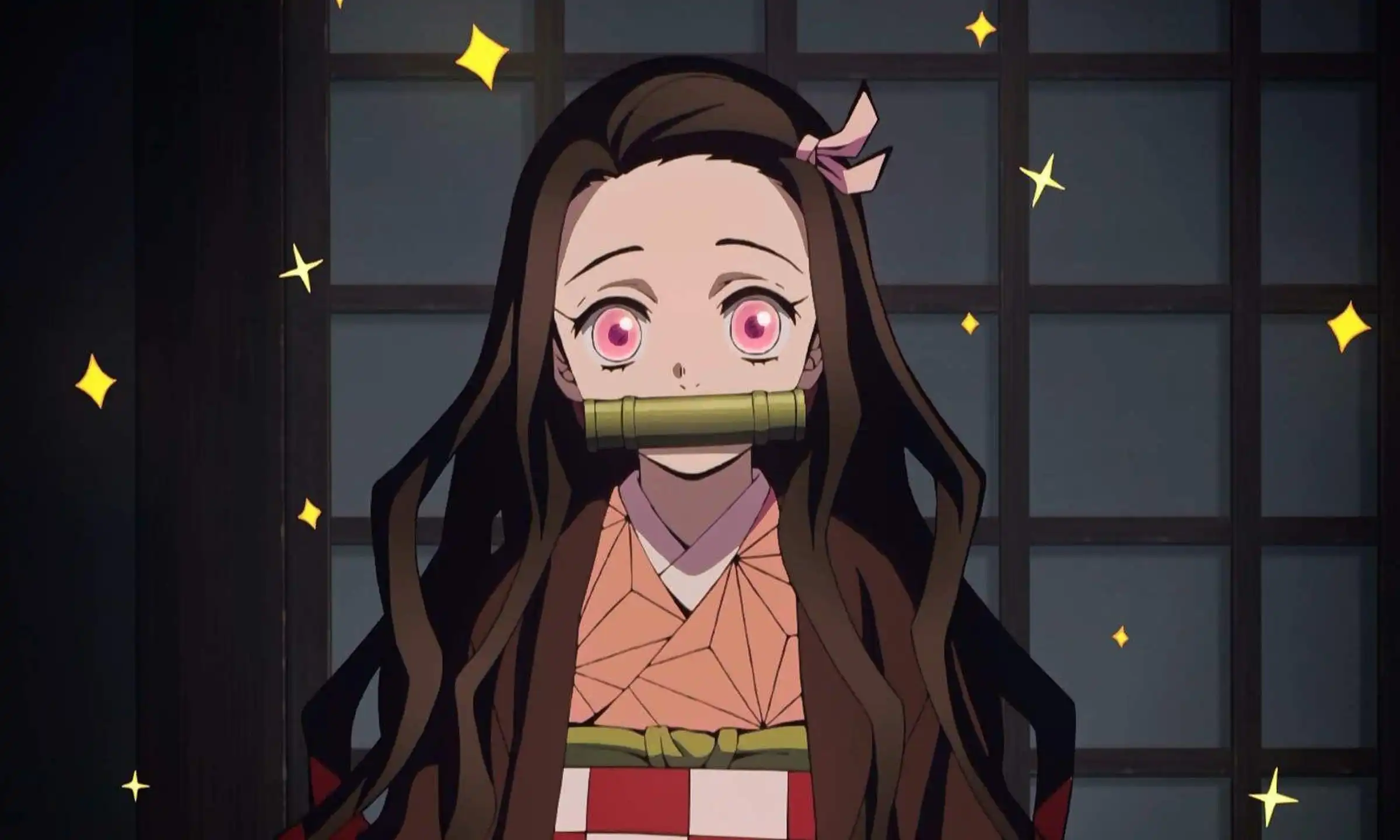Female Anime Characters, a vibrant and diverse medium of Japanese animation, has produced a vast array of unforgettable characters over the years. Among them, female anime characters have played pivotal roles, capturing the hearts of audiences with their complex personalities, emotional depth, and compelling storylines. This comprehensive exploration delves into the rich tapestry of female anime characters, examining their evolution, significance, and the various archetypes they embody. We will also highlight some iconic characters who have left an indelible mark on the world of anime.
The Evolution of Female Anime Characters
The portrayal of female characters in anime has evolved significantly over the decades, reflecting broader changes in societal attitudes and cultural trends. From early depictions of damsels in distress to modern portrayals of strong, independent women, the journey of female anime characters is both fascinating and complex.
Early Depictions: The Damsel in Distress
In the early days of anime, female characters were often depicted as passive and dependent on male protagonists for rescue and protection. This era, spanning the 1960s and 1970s, saw the emergence of anime like “Astro Boy” and “Lupin III,” where female characters often played secondary roles, serving as love interests or victims in need of saving.
The Rise of the Magical Girl Genre
The 1970s and 1980s witnessed the rise of the magical girl genre, which offered a more empowering portrayal of female characters. Series like “Sally the Witch” and “Cutie Honey” introduced young girls who possessed magical abilities and fought against evil forces. This genre not only provided female characters with more agency but also appealed to a young female audience, encouraging themes of empowerment and self-reliance.
The Advent of Strong Female Protagonists
The late 1980s and 1990s marked a significant shift in the portrayal of female characters in anime. This period saw the emergence of strong female protagonists who could hold their own in action-packed narratives. Iconic series like “Sailor Moon,” “Neon Genesis Evangelion,” and “Ghost in the Shell” featured complex female leads who combined strength, intelligence, and emotional depth. These characters broke away from traditional gender roles and became role models for viewers.
Modern Portrayals: Diversity and Complexity
In the 21st century, anime has continued to diversify its portrayal of female characters, offering a wide range of personalities, backgrounds, and storylines. Modern anime often emphasizes character development and explores complex themes, allowing female characters to shine in various genres, from action and adventure to drama and romance. Series like “Attack on Titan,” “My Hero Academia,” and “Your Lie in April” showcase female characters who are multifaceted and integral to the narrative.
Archetypes of Female Anime Characters
Female anime characters often fall into specific archetypes, each with its own distinct traits and narrative roles. These archetypes help to categorize the diverse personalities and characteristics that female characters can exhibit in anime.
The Heroine
The Heroine archetype represents strong, courageous female characters who often take on leadership roles and drive the narrative forward. They are usually the protagonists or key figures in the story, facing challenges head-on and inspiring those around them. Examples include Usagi Tsukino from “Sailor Moon” and Mikasa Ackerman from “Attack on Titan.”
The Tsundere
The Tsundere archetype is characterized by a dual personality: a cold, aloof exterior that conceals a warmer, more affectionate side. These characters often struggle with expressing their true feelings, leading to a mix of hostility and tenderness. Notable examples include Asuka Langley Soryu from “Neon Genesis Evangelion” and Taiga Aisaka from “Toradora!”
The Yandere
The Yandere archetype describes characters who are obsessively in love, often to the point of possessiveness and violence. These characters can switch from being sweet and loving to dangerously unhinged when their love interest is threatened. Famous Yandere characters include Yuno Gasai from “Future Diary” and Kotonoha Katsura from “School Days.”
The Kuudere
The Kuudere archetype features characters who are calm, composed, and emotionally reserved. They rarely show their feelings but may reveal a softer side to those they trust. Examples of Kuudere characters include Rei Ayanami from “Neon Genesis Evangelion” and Homura Akemi from “Puella Magi Madoka Magica.”
The Genki Girl
The Genki Girl archetype represents energetic, cheerful, and often hyperactive characters who bring positivity and enthusiasm to the story. They are usually very sociable and can uplift the spirits of those around them. Notable Genki Girls include Haruhi Suzumiya from “The Melancholy of Haruhi Suzumiya” and Yui Hirasawa from “K-On!”
The Dandere
The Dandere archetype describes shy, introverted characters who are quiet and reserved. They often struggle with social interactions but can form deep connections with those who take the time to understand them. Examples include Hinata Hyuga from “Naruto” and Mio Akiyama from “K-On!”
The Moe
The Moe archetype is associated with characters who are cute, endearing, and evoke a protective feeling in others. They often exhibit innocence and vulnerability, making them beloved by viewers. Iconic Moe characters include Nagisa Furukawa from “Clannad” and Madoka Kaname from “Puella Magi Madoka Magica.”
Iconic Female Anime Characters
To truly understand the impact of female anime characters, it’s essential to highlight some of the most iconic figures who have left a lasting impression on the medium. These characters not only embody various archetypes but also push the boundaries of what female characters can achieve in anime.

Usagi Tsukino (Sailor Moon)
Usagi Tsukino, also known as Sailor Moon, is one of the most recognizable and beloved female anime character. Created by Naoko Takeuchi, Usagi is the protagonist of the “Sailor Moon” series, which revolutionized the magical girl genre. As Sailor Moon, Usagi transforms into a powerful warrior who fights against evil forces to protect the Earth. Her journey from a clumsy, crybaby teenager to a confident, brave leader has inspired generations of fans. Usagi’s character emphasizes themes of friendship, love, and self-acceptance, making her a timeless role model.
Rei Ayanami (Neon Genesis Evangelion)
Rei Ayanami is a central character in “Neon Genesis Evangelion,” a groundbreaking anime series created by Hideaki Anno. As one of the Eva pilots, Rei is enigmatic and emotionally detached, embodying the Kuudere archetype. Her mysterious origins and complex relationship with protagonist Shinji Ikari add depth to the narrative. Rei’s character explores themes of identity, humanity, and the nature of existence, making her one of the most thought-provoking characters in anime history.
Motoko Kusanagi (Ghost in the Shell)
Motoko Kusanagi, also known as Major, is the protagonist of “Ghost in the Shell,” a cyberpunk anime series created by Masamune Shirow. As the leader of Section 9, a covert operations unit, Major is a highly skilled and intelligent cyborg with a strong sense of justice. Her character delves into philosophical questions about consciousness, the soul, and what it means to be human in a technologically advanced world. Major’s strength, independence, and complexity have made her an iconic figure in both anime and science fiction.
Mikasa Ackerman (Attack on Titan)
Mikasa Ackerman is a prominent character in “Attack on Titan,” a dark fantasy anime created by Hajime Isayama. As a member of the Survey Corps, Mikasa is known for her exceptional combat skills and unwavering loyalty to her adoptive brother, Eren Yeager. Her tragic backstory and relentless determination make her a compelling character. Mikasa’s strength, resilience, and emotional depth have earned her a dedicated fanbase and solidified her place as one of the most powerful female characters in anime.

Asuka Langley Soryu (Neon Genesis Evangelion)
Asuka Langley Soryu is another key character in “Neon Genesis Evangelion.” As the second child and pilot of Eva Unit-02, Asuka is confident, brash, and highly skilled. Her outward bravado often hides deep insecurities and a desire for validation. Asuka’s character arc is marked by intense psychological struggles and personal growth. Her dynamic personality and complex relationships with other characters make her an integral part of the series’ exploration of human emotions and trauma.
Bulma (Dragon Ball Series)
Bulma is a central character in the “Dragon Ball” series created by Akira Toriyama. As a brilliant scientist and inventor, Bulma plays a crucial role in the adventures of Goku and his friends. Her intelligence, resourcefulness, and strong-willed nature make her a standout character in a series dominated by powerful fighters. Bulma’s contributions to the story, both as a friend and a scientist, highlight the importance of intellect and innovation in overcoming challenges.
Sakura Kinomoto (Cardcaptor Sakura)
Sakura Kinomoto is the protagonist of “Cardcaptor Sakura,” a magical girl anime created by CLAMP. As a young girl who accidentally releases a set of magical cards, Sakura embarks on a journey to capture them and prevent disaster. Her character is kind-hearted, determined, and brave, embodying the qualities of a classic heroine. Sakura’s adventures emphasize themes of courage, friendship, and self-discovery, making her a beloved character in the magical girl genre.
Hinata Hyuga (Naruto)
Hinata Hyuga is a significant character in the “Naruto” series created by Masashi Kishimoto. As a member of the Hyuga clan, Hinata possesses the Byakugan, a powerful visual ability. Initially shy and lacking confidence, Hinata’s character grows tremendously throughout the series, becoming a strong and capable ninja. Her unwavering love and support for Naruto Uzumaki highlight her loyalty and compassion. Hinata’s journey of self-improvement and determination resonates with many fans, making her a cherished character.
Homura Akemi (Puella Magi Madoka Magica)
Homura Akemi is a central character in “Puella Magi Madoka Magica,” a dark twist on the magical girl genre created by Gen Urobuchi. Homura’s character is complex and multifaceted, with a storyline that involves time travel and repeated attempts to save her friend, Madoka Kaname. Her initial cold demeanor masks deep emotional turmoil and a fierce determination to protect those she cares about. Homura’s character explores themes of sacrifice, despair, and the lengths one will go to for love and friendship.
Rukia Kuchiki (Bleach)
Rukia Kuchiki is a key character in “Bleach,” an action-packed anime created by Tite Kubo. As a Soul Reaper, Rukia is responsible for guiding souls to the afterlife and battling malevolent spirits known as Hollows. Her encounter with the protagonist, Ichigo Kurosaki, sets the story in motion. Rukia’s character is strong, intelligent, and compassionate, with a rich backstory involving her noble family and personal struggles. Her development throughout the series highlights themes of duty, redemption, and the bonds of friendship.
The Impact of Female Anime Characters
Female anime characters have had a profound impact on the medium and its audience, influencing cultural perceptions and inspiring countless fans worldwide. Their diverse portrayals challenge stereotypes, promote inclusivity, and offer representation for various experiences and identities.

Challenging Stereotypes
Female anime characters often defy traditional gender roles and stereotypes, showcasing a wide range of abilities, personalities, and strengths. Characters like Motoko Kusanagi and Mikasa Ackerman break the mold of passive, dependent female figures, demonstrating that women can be leaders, warriors, and intellectuals. This shift in portrayal encourages viewers to question societal norms and embrace more progressive views on gender roles.
Promoting Inclusivity
Anime has made significant strides in promoting inclusivity by featuring female characters from diverse backgrounds and with different experiences. This inclusivity extends to various aspects such as race, sexuality, and personal identity. For example, characters like Yoruichi Shihouin from “Bleach” and Michiru Kaiou from “Sailor Moon” represent racial and LGBTQ+ diversity, respectively. By offering a broader spectrum of representation, anime fosters a more inclusive and accepting environment for all viewers.
Offering Representation
Representation in media is crucial for audiences to see themselves reflected in the stories they consume. Female anime characters provide representation for various experiences, from the struggles of adolescence to the challenges of leadership and heroism. Characters like Sakura Kinomoto and Hinata Hyuga resonate with viewers who relate to their journeys of self-discovery and personal growth. This representation can be empowering and validating, helping viewers feel seen and understood.
Inspiring Fans
The impact of female anime characters extends beyond the screen, inspiring fans in their personal lives. Many viewers look up to these characters as role models, drawing strength from their resilience, bravery, and determination. Characters like Usagi Tsukino and Asuka Langley Soryu have inspired generations of fans to embrace their own unique qualities and strive for their goals. The positive influence of these characters can be seen in fan communities, creative works, and personal stories shared by fans.

Conclusion
Female anime characters are a cornerstone of the anime medium, contributing to its rich and diverse storytelling landscape. From early depictions of damsels in distress to modern portrayals of complex, multifaceted women, the evolution of female characters in anime reflects broader societal changes and cultural trends. These characters embody various archetypes, each with its own unique traits and significance, and have left an indelible mark on the world of anime.
Iconic female characters like Usagi Tsukino, Rei Ayanami, and Motoko Kusanagi have challenged stereotypes, promoted inclusivity, and offered representation for diverse experiences. Their impact on audiences is profound, inspiring countless fans and fostering a deeper appreciation for the medium. As anime continues to evolve, the portrayal of female characters will undoubtedly continue to break new ground, offering even more compelling and inspiring stories for viewers to enjoy.
In celebrating the legacy and influence of female anime characters, we acknowledge their importance in shaping the world of anime and their enduring impact on fans around the globe. These characters are more than just fictional figures; they are symbols of strength, resilience, and the limitless potential of storytelling.
Frequently Asked Question FAQs about “Female Anime Characters”
Q1: Who are some of the most iconic female anime characters?
A1: Some of the most iconic female anime characters include Sailor Moon from “Sailor Moon,” known for her transformation into the powerful heroine who fights evil; Asuka Langley Soryu from “Neon Genesis Evangelion,” a skilled Eva pilot with a complex personality; Mikasa Ackerman from “Attack on Titan,” revered for her exceptional combat skills and fierce loyalty to her friends; and Bulma from “Dragon Ball,” a brilliant scientist and inventor who plays a crucial role in the series. These characters have left a lasting impact on the anime world and have become symbols of strength, intelligence, and resilience.
Q2: What makes female anime characters popular among fans?
A2: Female anime characters are popular among fans for their diverse personalities, unique story arcs, and the way they break stereotypes. They often embody a range of traits from strength and intelligence to vulnerability and compassion, making them relatable and multidimensional. Many female characters are portrayed as strong and independent, challenging traditional gender roles and providing positive role models. Additionally, their development over the course of a series, including overcoming personal struggles and growing through their experiences, resonates with audiences and fosters deep emotional connections.
Q3: How have female anime characters evolved over time?
A3: Female anime characters have evolved significantly over time, moving from traditional and often one-dimensional roles to more complex and empowered portrayals. In the early days of anime, female characters were frequently depicted as damsels in distress or sidekicks to male protagonists. However, modern anime features strong, independent women who play central roles in their narratives. They are often depicted as leaders, warriors, and intellectuals, showcasing a wide range of abilities and personalities. This evolution reflects broader societal changes and a growing appreciation for diverse and strong female characters in media.
Q4: What are some notable characteristics of female anime protagonists?
A4: Female anime protagonists often exhibit notable characteristics such as resilience, intelligence, and empathy. They frequently face and overcome significant challenges, demonstrating inner strength and determination. Many are depicted as highly skilled, whether in combat, academics, or other fields, showcasing their competence and capability. Empathy and strong interpersonal relationships are also common traits, with female protagonists often forming deep bonds with other characters. Their narratives typically involve personal growth and self-discovery, making their journeys compelling and inspirational.
Q5: Who are some strong female leads in recent anime series?
A5: Recent anime series feature several strong female leads who have garnered significant attention and admiration. For instance, Emma from “The Promised Neverland” is celebrated for her intelligence, bravery, and unwavering determination to protect her friends. Nezuko Kamado from “Demon Slayer” stands out for her strength and loyalty, even as she battles her own transformation into a demon. Violet Evergarden from the series of the same name captivates audiences with her journey of emotional healing and growth as she learns to understand human emotions. These characters exemplify the qualities of resilience, compassion, and strength, making them standout protagonists in contemporary anime.
Q6: How do female anime characters influence fans and popular culture?
A6: Female anime characters significantly influence fans and popular culture by serving as role models and symbols of empowerment. Their stories often inspire fans to embrace their own strengths and overcome personal challenges. Many female characters also impact fashion trends, with their distinctive styles being emulated by fans through cosplay and everyday wear. Additionally, these characters influence the broader media landscape by contributing to the demand for diverse and complex female representations in other forms of entertainment. Their popularity drives the creation of merchandise, fan art, and fan fiction, further embedding them into popular culture.
Q7: What are some common tropes associated with female anime characters, and how are they challenged?
A7: Common tropes associated with female anime characters include the “tsundere” (a character who is initially cold but gradually shows a warmer side), the “damsel in distress,” and the “magical girl.” While these tropes have been prevalent, many modern anime challenge and subvert them. For example, characters that may initially appear as damsels in distress often reveal hidden strengths and play pivotal roles in the storyline. The “magical girl” trope, traditionally seen in series like “Sailor Moon,” has evolved to feature more complex and darker narratives, as seen in “Puella Magi Madoka Magica.” By challenging these tropes, anime continues to push for more nuanced and diverse representations of female characters.
Q8: How are female villains portrayed in anime, and what makes them compelling?
A8: Female villains in anime are often portrayed with depth and complexity, making them compelling and memorable. They are frequently given intricate backstories that explain their motivations and actions, which adds layers to their character. Examples include characters like Esdeath from “Akame ga Kill!” who, despite her ruthless nature, shows moments of vulnerability and complexity. Another example is Lust from “Fullmetal Alchemist,” who combines charm with deadly skills, creating a multidimensional antagonist. The portrayal of female villains challenges the notion of one-dimensional evil and explores themes of power, morality, and redemption, making their stories engaging and thought-provoking.
Q9: What impact do female anime characters have on gender representation in media?
A9: Female anime characters have a significant impact on gender representation in media by providing diverse and empowered portrayals of women. They challenge traditional gender roles and stereotypes, showcasing women in a variety of roles such as leaders, warriors, and intellectuals. This diversity in representation helps to normalize the idea of strong, independent women in media and contributes to a broader cultural shift towards gender equality. By offering positive role models and complex characters, female anime characters encourage viewers to question and rethink societal norms regarding gender, ultimately promoting more inclusive and equitable media landscapes.
Q10: Can you name some female anime characters who are leaders or in positions of power?
A10: There are numerous female anime characters who hold positions of power and leadership. For instance, Erza Scarlet from “Fairy Tail” is a prominent leader within the Fairy Tail Guild, known for her formidable combat skills and strategic mind. Another example is Olivier Mira Armstrong from “Fullmetal Alchemist: Brotherhood,” a commanding officer with an unyielding presence and exceptional leadership abilities. Additionally, Misato Katsuragi from “Neon Genesis Evangelion” serves as a senior officer in NERV, making critical decisions in the fight against the Angels. These characters exemplify strength, authority, and leadership, breaking traditional gender roles and showcasing the capabilities of women in powerful positions.
Q11: What role do female characters play in shonen anime, typically targeted at young male audiences?
A11: In shonen anime, which is typically targeted at young male audiences, female characters often play crucial roles that go beyond mere sidekicks or love interests. They are frequently depicted as strong fighters, strategic thinkers, and integral members of the main cast. Characters like Sakura Haruno from “Naruto” and Rukia Kuchiki from “Bleach” are essential to their respective storylines, contributing significantly to battles and character development. Female characters in shonen anime help to diversify the narratives and provide role models for both male and female viewers, showing that strength and heroism are not confined to one gender.
Q12: How do female anime characters contribute to the genre of slice-of-life anime?
A12: Female anime characters play a central role in the slice-of-life genre, which focuses on everyday experiences and personal growth. These characters often explore themes of friendship, family, and self-discovery, providing relatable and heartwarming stories. For example, in “March Comes in Like a Lion,” characters like Hinata Kawamoto face real-life challenges such as bullying and family struggles, offering a poignant look at personal resilience and compassion. In “Clannad,” female characters navigate complex emotional journeys, highlighting the importance of human connections and the impact of everyday moments. Through these narratives, female characters in slice-of-life anime contribute to the genre’s ability to depict the beauty and complexity of ordinary life.
Q13: What impact have female anime characters had on the anime industry as a whole?
A13: Female anime characters have had a profound impact on the anime industry by driving diversity in storytelling and attracting a broad audience. Their complex and varied portrayals have challenged traditional gender norms, leading to more nuanced and inclusive narratives. This evolution has expanded the appeal of anime to a wider demographic, including more female viewers. Additionally, the popularity of strong female characters has influenced merchandise, fashion, and fandom culture, creating a robust market around these characters. The industry’s recognition of the importance of female characters has led to continued innovation and growth, solidifying anime’s position as a progressive and influential form of entertainment.
Q14: Are there any notable female anime characters who are also mothers or caregivers?
A14: Yes, there are notable female anime characters who are mothers or caregivers, portraying the strength and dedication required in these roles. One prominent example is Trisha Elric from “Fullmetal Alchemist,” whose love and care for her sons, Edward and Alphonse, leave a lasting impact on their lives and motivations. Another example is Sanae Furukawa from “Clannad,” who, along with her husband, provides a nurturing and supportive environment for her daughter Nagisa. These characters highlight the emotional depth and complexity of motherhood and caregiving, emphasizing their importance and influence within the narratives.
Q15: How do female anime characters in sports anime contribute to the genre?
A15: Female anime characters in sports anime contribute significantly by showcasing determination, skill, and teamwork in traditionally male-dominated fields. Characters like Ryuko Matoi from “Kill la Kill” and Aoba Suzukaze from “New Game!” exemplify dedication and passion for their respective sports, breaking gender barriers and inspiring viewers. These characters often face and overcome various challenges, such as competition, personal growth, and teamwork, highlighting the universal themes of perseverance and sportsmanship. Their inclusion in sports anime adds diversity and depth to the genre, making it more inclusive and relatable to a broader audience.

Navigating the Diverse Realms of Tech, News, Business, Lifestyle and Gaming
Meet Linda, a versatile blogger with a passion for exploring the ever-evolving landscapes of technology, news, business, and more. Gabriel’s passion for staying at the forefront of diverse niches reflects in every blog post. Through his insightful blogs, Scott provides readers with a window into the latest trends, wellness tips, and the ever-evolving landscape of daily living. With a knack for distilling complex topics into digestible insights, Debra invites readers to join her on a journey where each blog post is a window into the dynamic intersection of modern trends and business dynamics.


